Trying to formulate my problem generically: I did a pairwise comparison of multiple elements and want to build sets (groups) from this adjacency matrix (i.e. build groups where of elements where the pairwise comparison equals TRUE).
For example: I have 6 shapes. Shape 1 overlaps shape 2, which overlaps shape 3. Shape 4 is alone, shape 5 overlaps shape 6 (see below)
If i do a pairwise comparison between all shapes and ask if they overlap another shape, I receive this following matrix.
(Please note: This is the starting point of my question. The image above and the story about shapes just serves as an example)
[,1] [,2] [,3] [,4] [,5] [,6]
[1,] TRUE TRUE FALSE FALSE FALSE FALSE # shape 1 overlaps shapes 1 and 2
[2,] TRUE TRUE TRUE FALSE FALSE FALSE # shape 2 overlaps shapes 1, 2 and 3
[3,] FALSE TRUE TRUE FALSE FALSE FALSE # etc...
[4,] FALSE FALSE FALSE TRUE FALSE FALSE
[5,] FALSE FALSE FALSE FALSE TRUE TRUE
[6,] FALSE FALSE FALSE FALSE TRUE TRUE
I'm looking for a method with which I can build the following groups (group order does not matter):
- Group a: shapes 1, 2 and 3
- Group b: shape 4
- Group c: shapes 5 and 6
You can use the following code to reproduce the pairwise comparison matrix:
adjacency_matrix <- matrix(c(TRUE, TRUE, FALSE, FALSE, FALSE, FALSE, TRUE, TRUE, TRUE, FALSE, FALSE, FALSE, FALSE, TRUE, TRUE, FALSE, FALSE, FALSE, FALSE, FALSE, FALSE, TRUE, FALSE, FALSE, FALSE, FALSE, FALSE, FALSE, TRUE, TRUE, FALSE, FALSE, FALSE, FALSE, TRUE, TRUE),nrow = 6)

